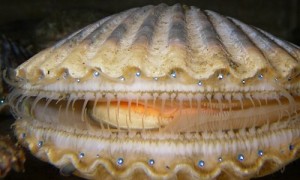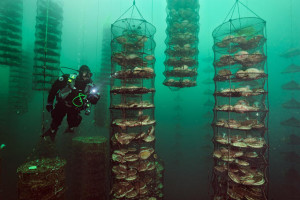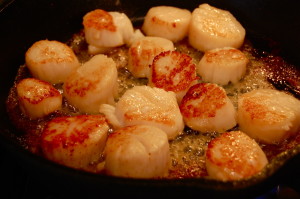Scallops
(Pecten Novaezealandiae)
Scallops, common name ‘The New Zealand Scallop’, is a bivalve mollusc of the family Pectinidee, the scallops Pecten Novaezealandiae is a completely free-living, mobile and somewhat migratory. Scallops can swim with brief bursts of speed by clapping their shells together (Jet Propulsion)
The two valves are asymmetric. The left valve is convex while the right is flat. The concave valve has approximately 16 ribs. The colour is variable; however the valves are usually a whitish pink, but sometimes can be dark reddish brown.
Habitat:
Scallops are found on the seabed of sheltered coastal waters ranging from sand, silt and mud, from low tide level to depths of 30 metres or more. Large populations are usually found at depths of 10-25 metres.
Scallops are endemic to New Zealand. They are found in the North Island, South Island, Stewart Island and the Chatham Islands.
Breeding Habits:
Sexually mature individuals are hermaphrodites. They are broadcast spawners. The season when the organisms spawn is variable between locations. However, in Tasman bay, the peak time is from November to March. Fertilisation occurs and a plank tonic lava forms. This life stage is conserved for approximately three weeks
Farming:
In New Zealand, farming of scallops has been very successful in Tasman and Golden Bays, New Zealand Scallops (Pecten Novaezealandiae) are large fan-shaped shellfish with a flat upper shell and a deeply curved lower shell. They live on the seabed of coastal waters at depths of 30 meters or more.
Scallops are cultivated by suspending spat-collecting bags in coastal waters during summer. Thousands of scallop larvae settle out of the plankton onto the fine feathery surface of the bag. The larvae are left to grow to a suitable size before they are collected and released onto known natural scallop beds at densities of about 16 per square metre of sea floor. There they grow for one or two years before the bed is harvested by dredging or Rapido trawl.
Food Chain:
Natural predators of Scallops are Starfish, Octopus and of course Humans.
The New Zealand scallop is a large export industry of New Zealand. Scallops are considered a fine food and can be expensive to purchase.
Recreational and commercial fishing of the species is allowed at particular times of the year ‘Scallop Season’. The size and number which can be caught are under control of the quota management system, size and bag limits can vary from region to region. In some areas of suitable habitat, such as Tasman Bay scallop spat is seeded in an attempt to achieve a sustainable fishery.


